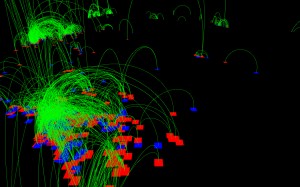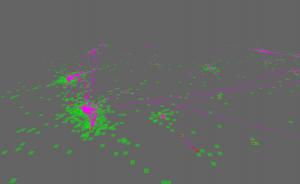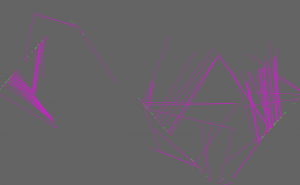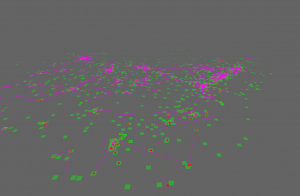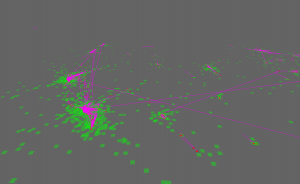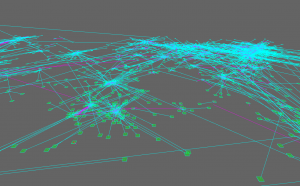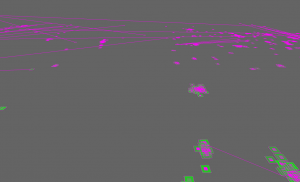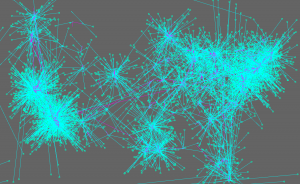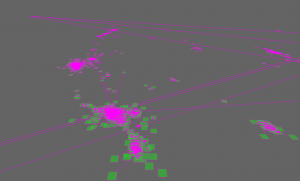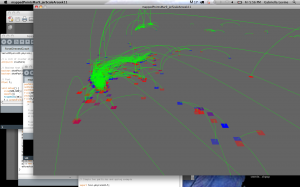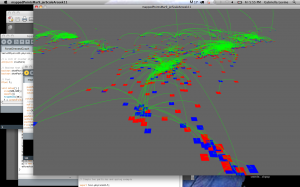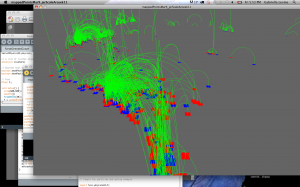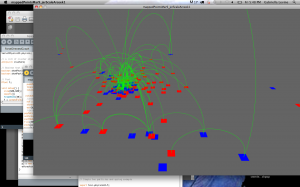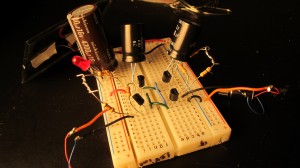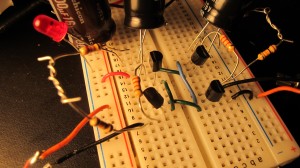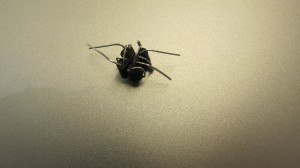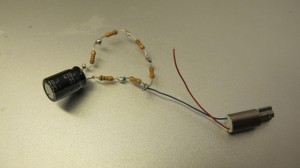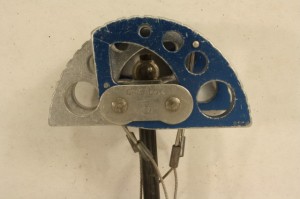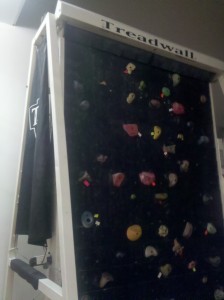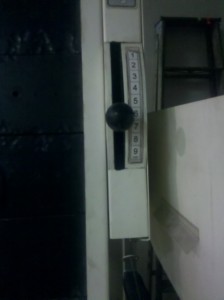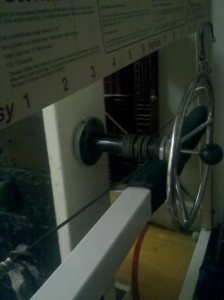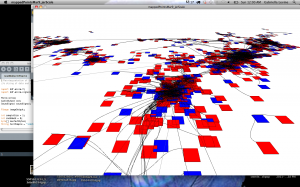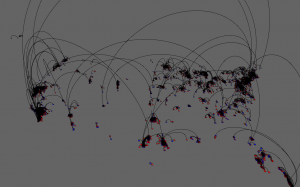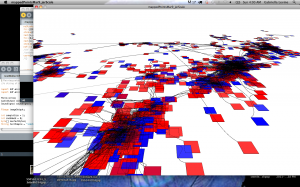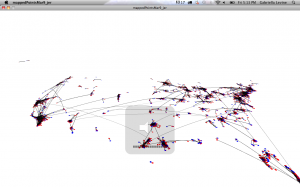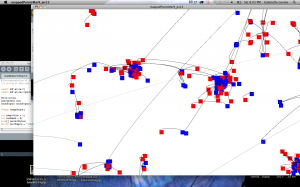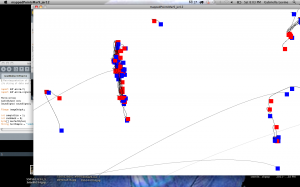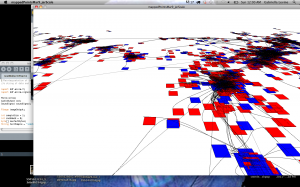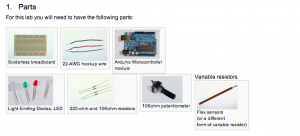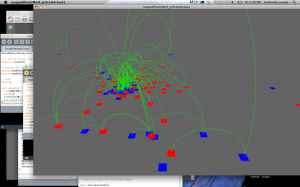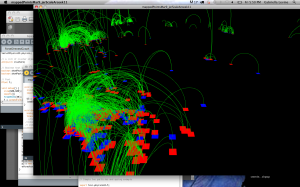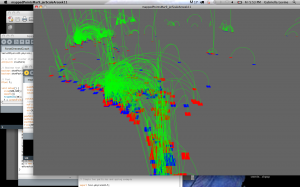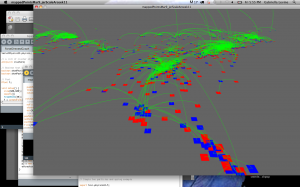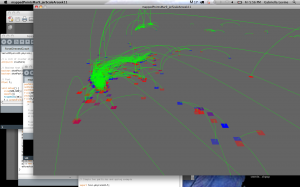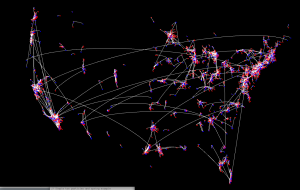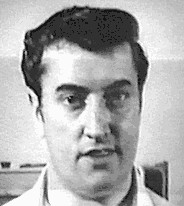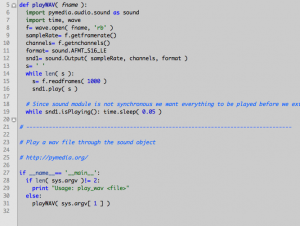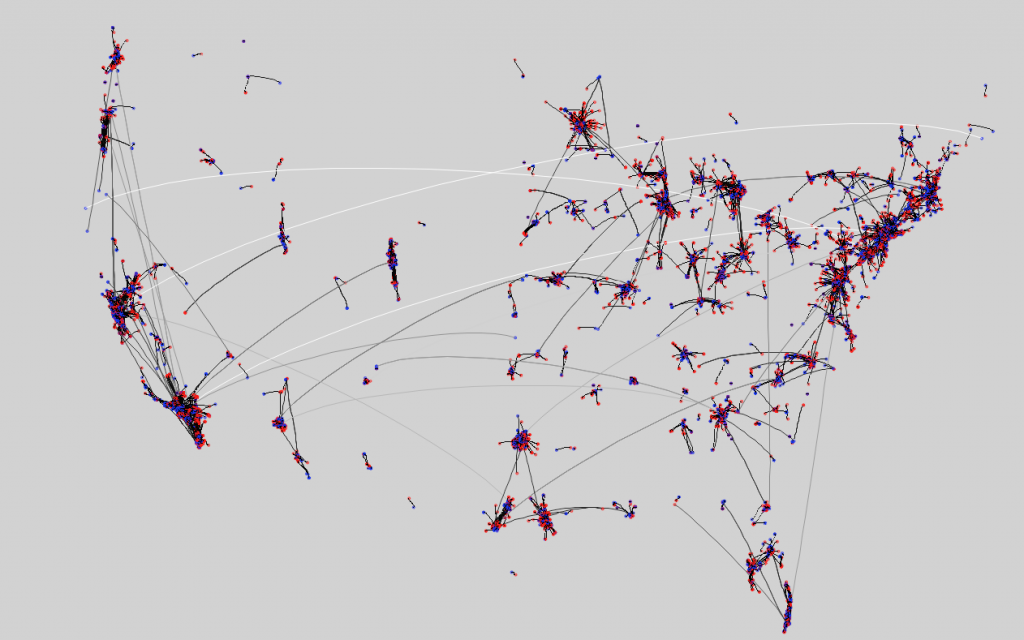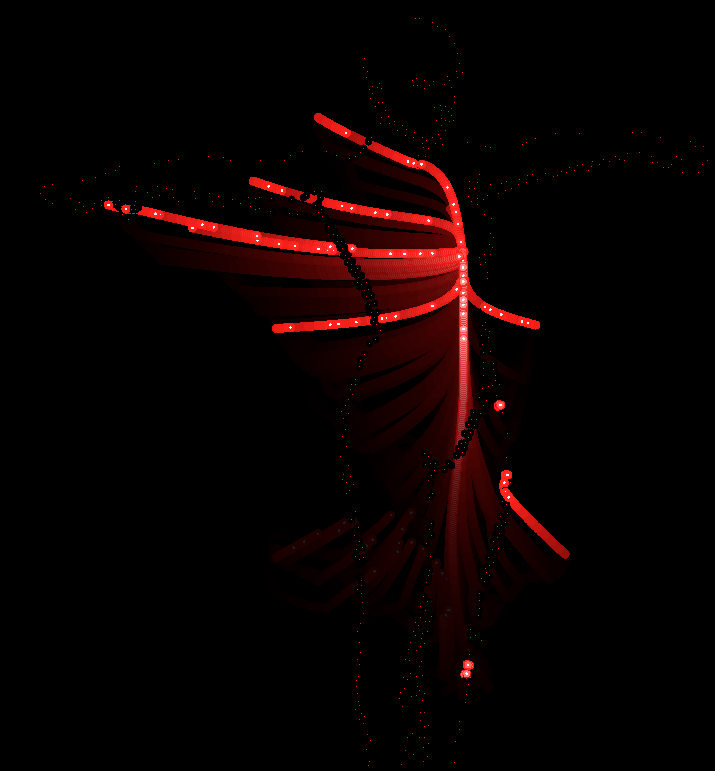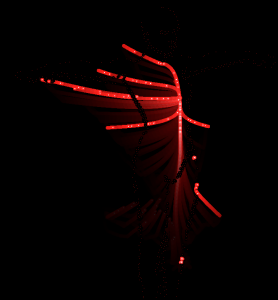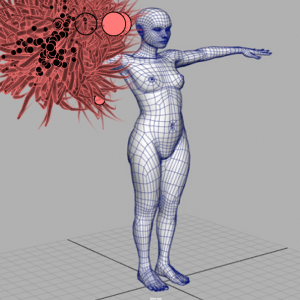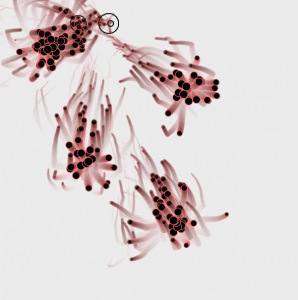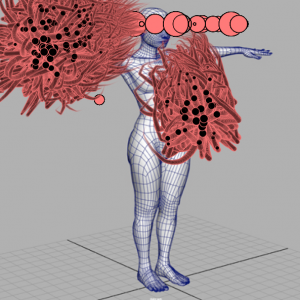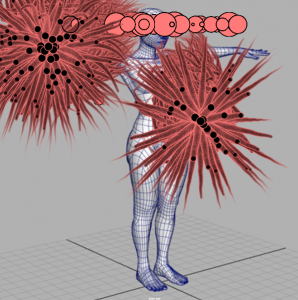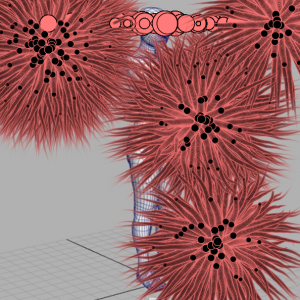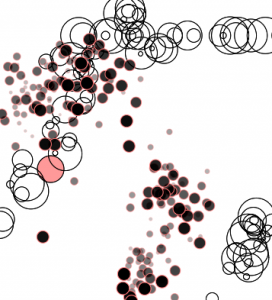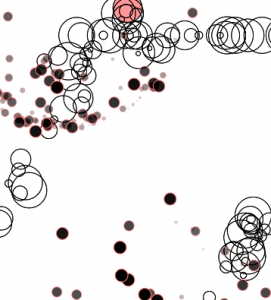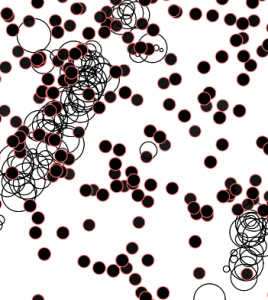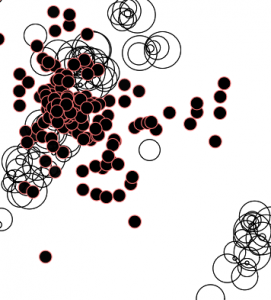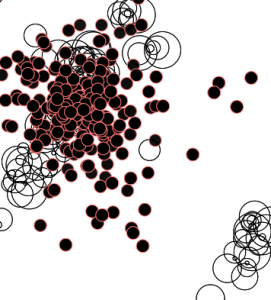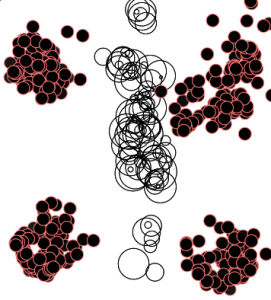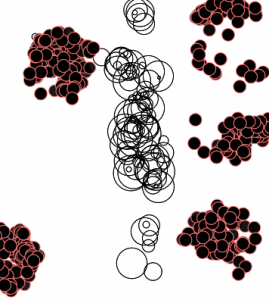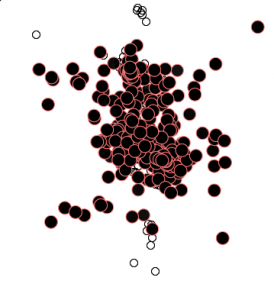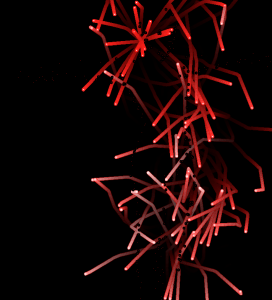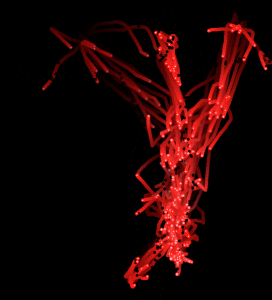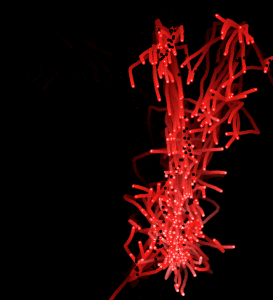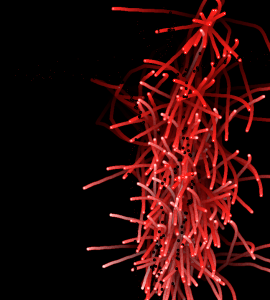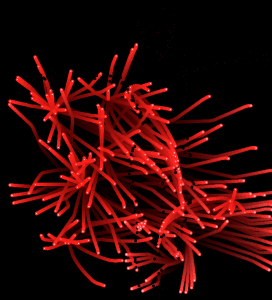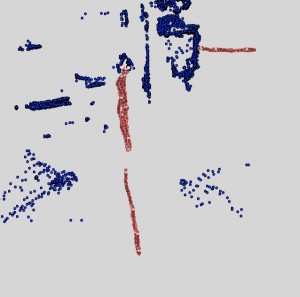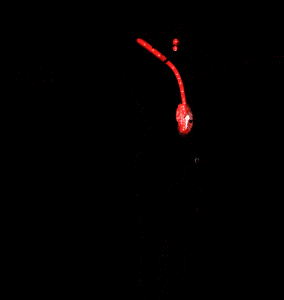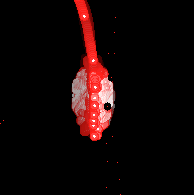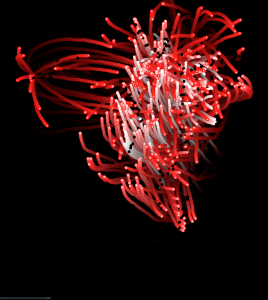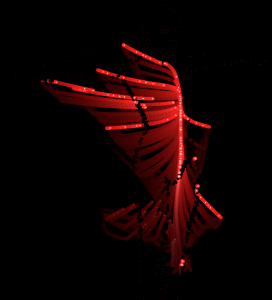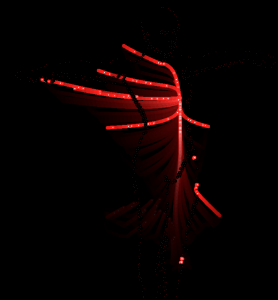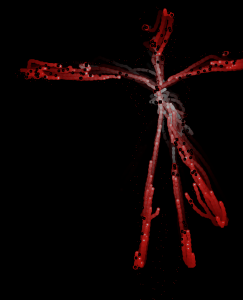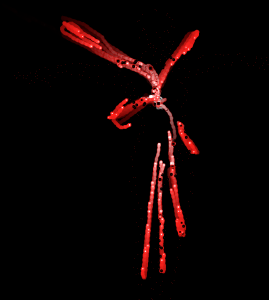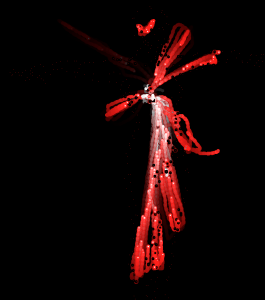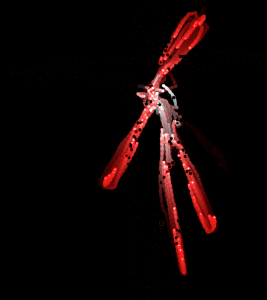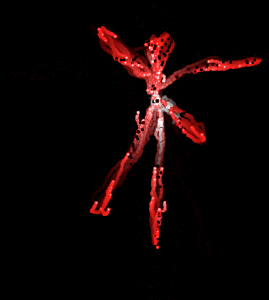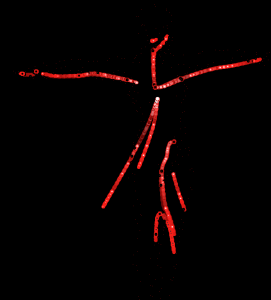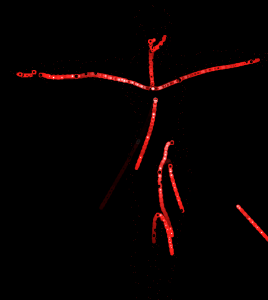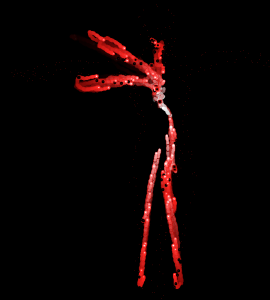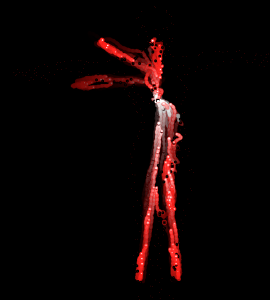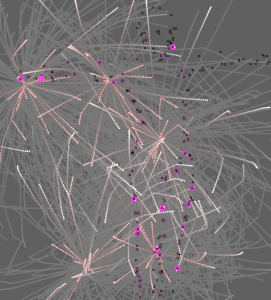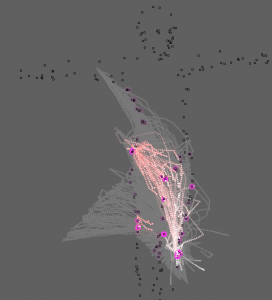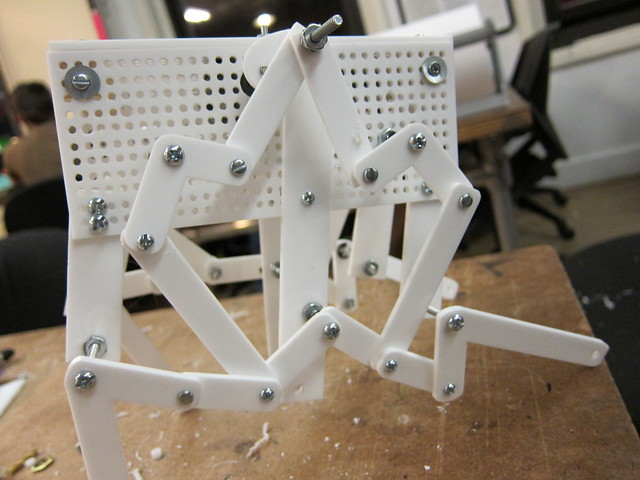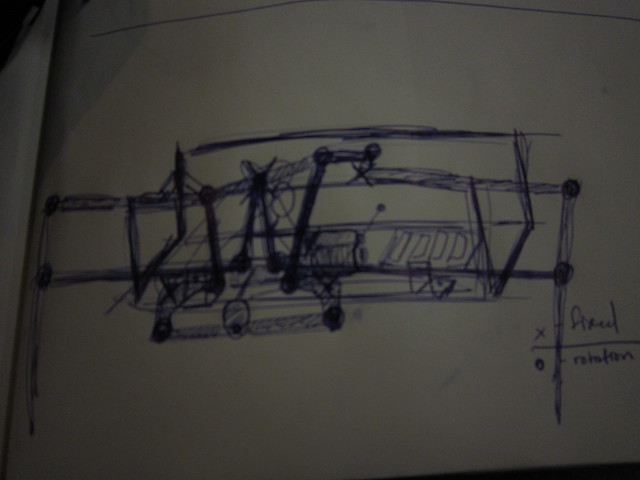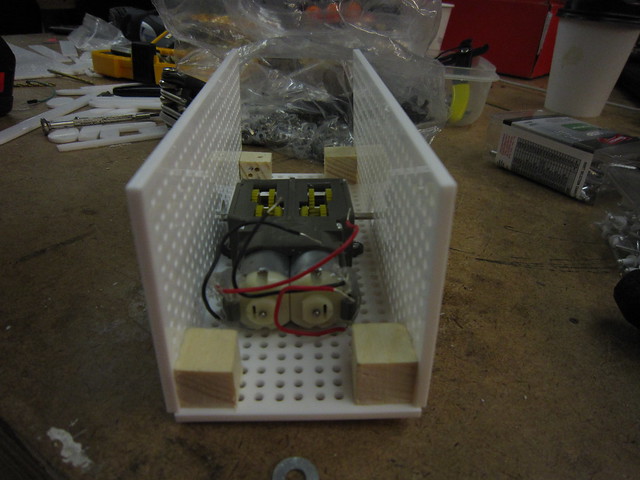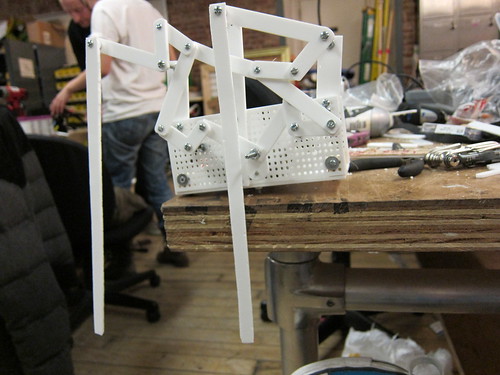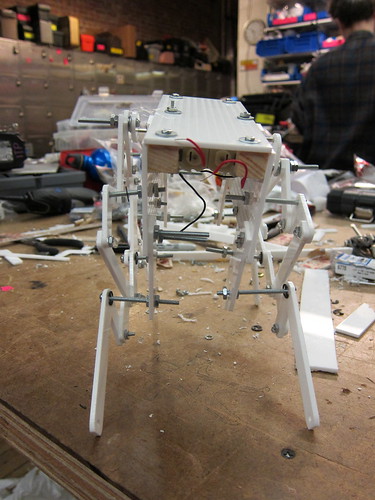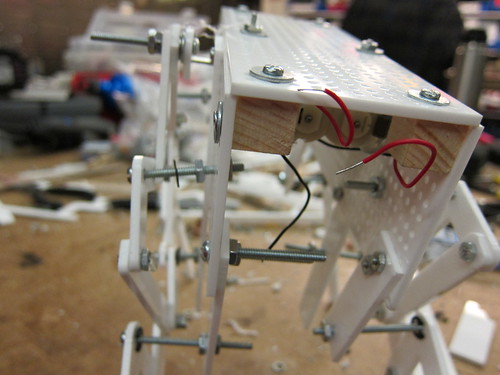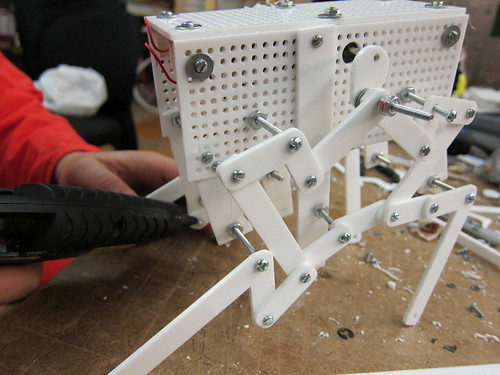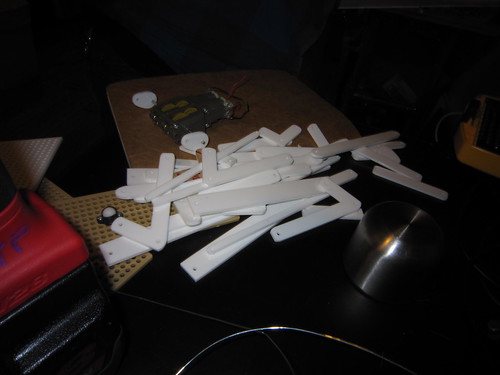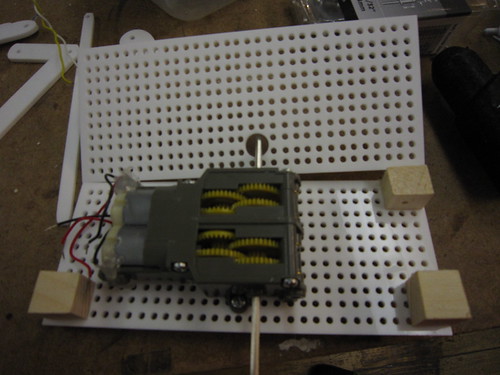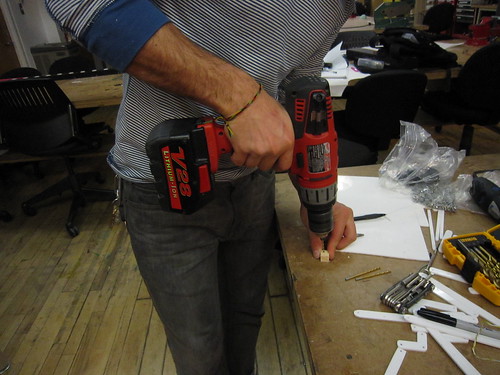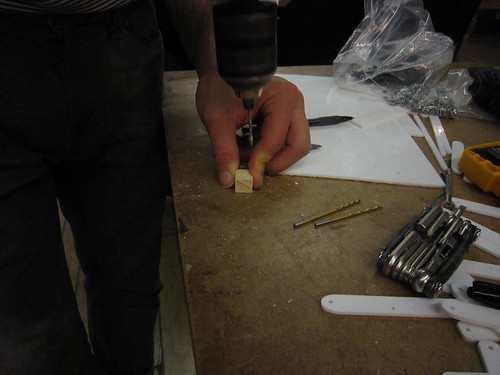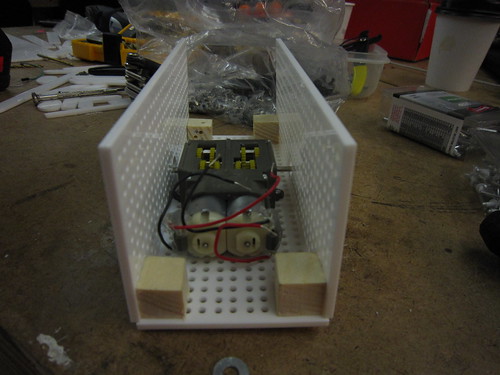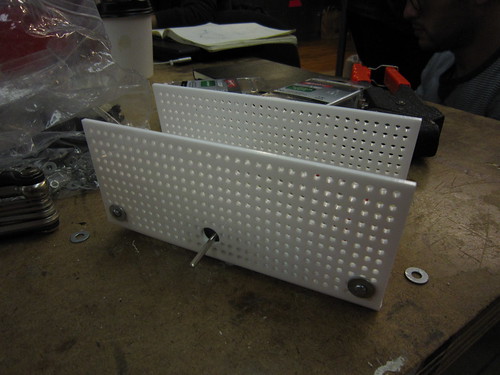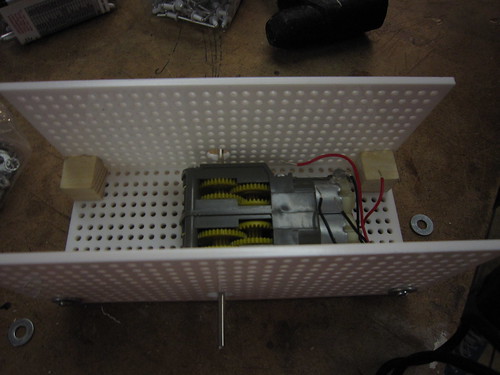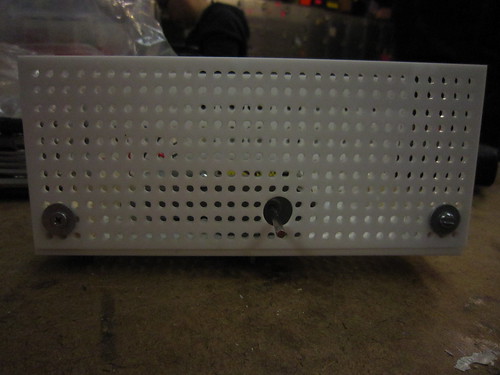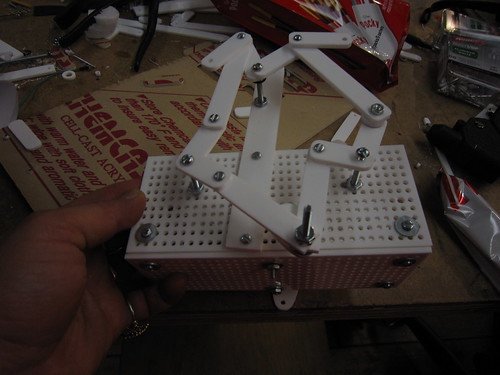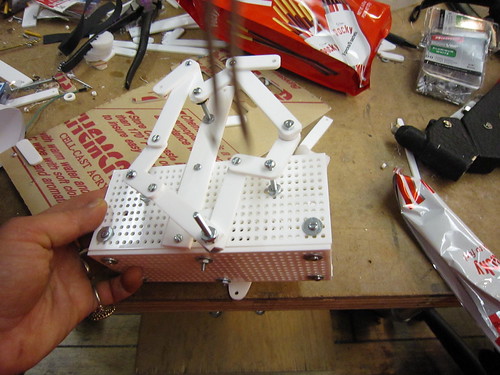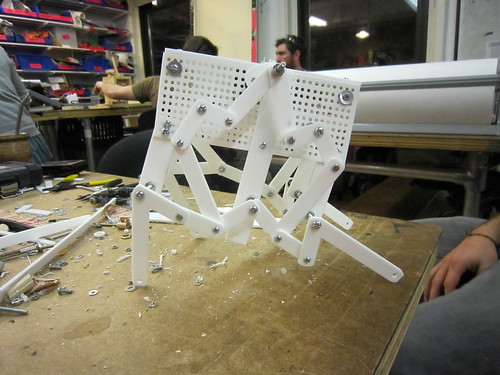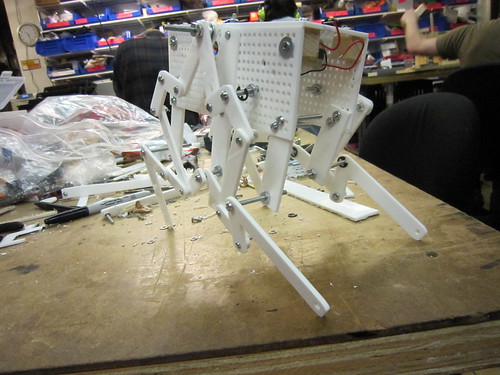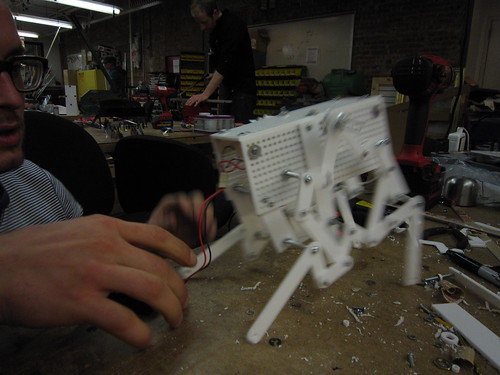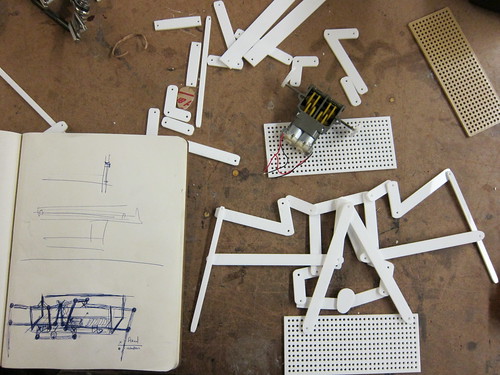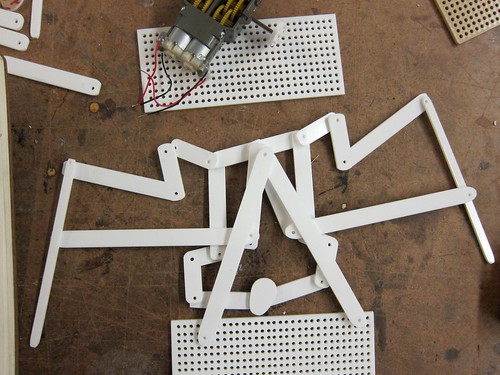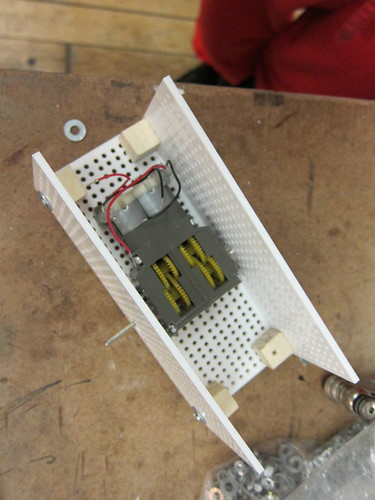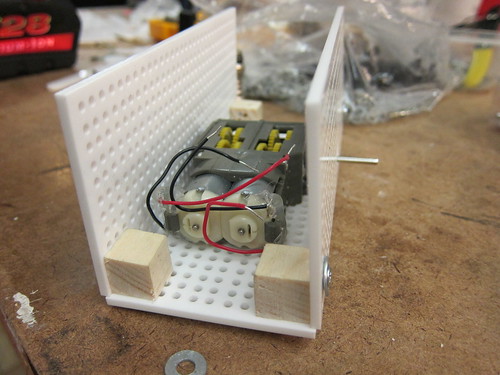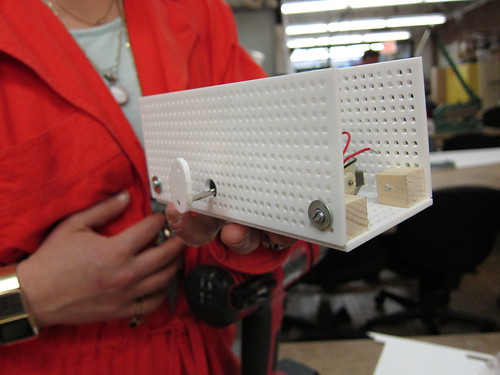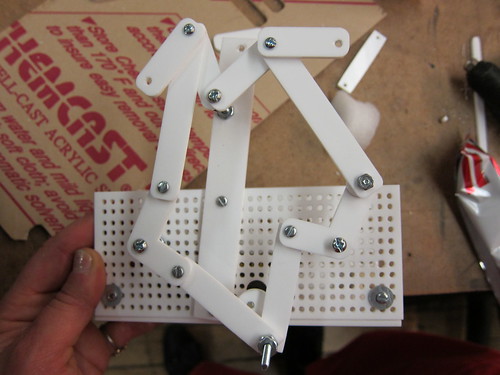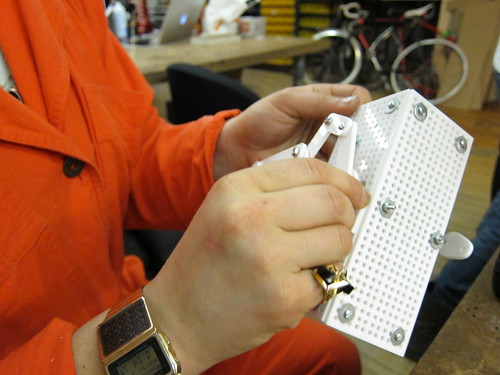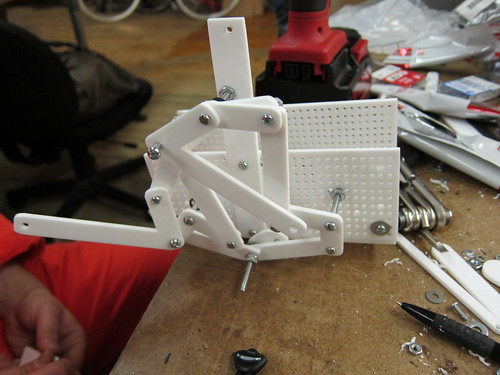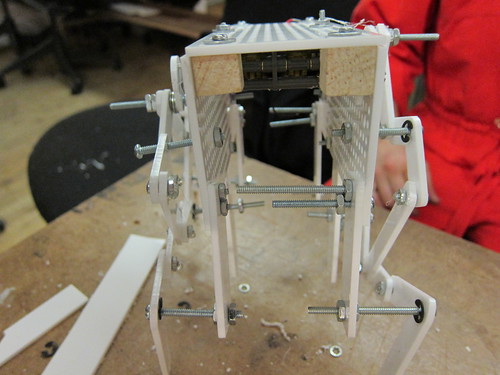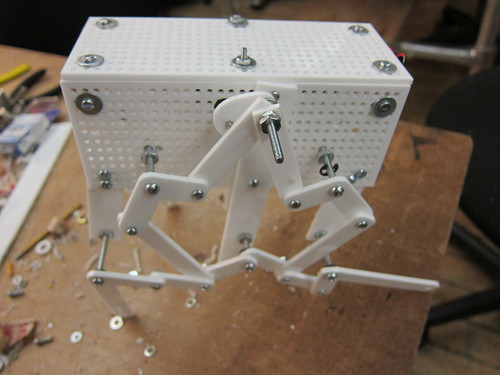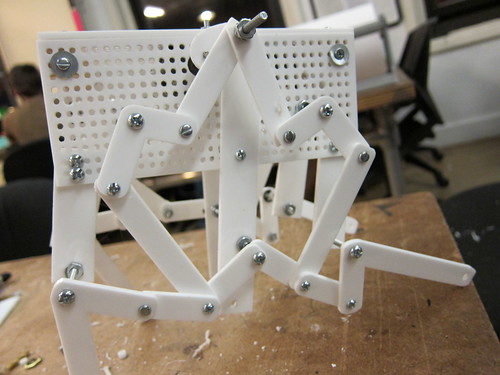Archive for March, 2011
at the Climbing gym
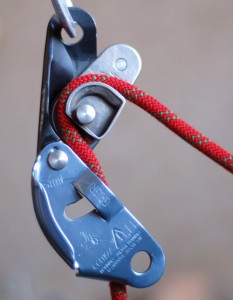
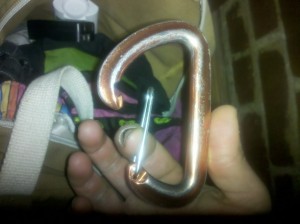
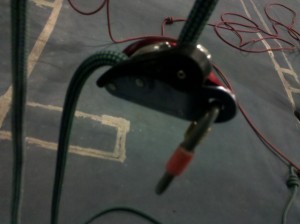
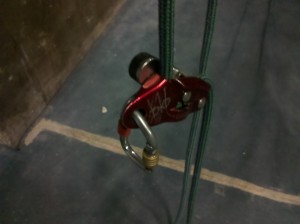
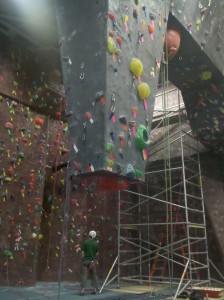
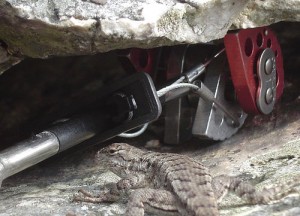
Things in the gym that have bearings, bushings, sliding things, springs etc…
Many things I use for rock climbing are made up of bearings, gears, springs, cams, and other moving parts…
BeamBot
I built the beginning of a BEAM robot: it moves in the light. Using a blinking LED as a diode that allows it to pulse rhythmically. I’m using a small capacitor (2200 uF), but using a clamp light, the solar panel charges to about 4.5 V.
I’d like to use an oscilloscope to see more of what’s going on.
I used this circuit from this site
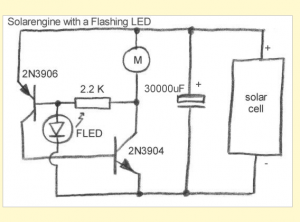
Here are some helpful links for the BEAM photopopper I hope to build:
Solarbotics tutorials
Beam circuits
Fred Photopopper
another Fred Photopopper tutorial
I’d like it to look something like this, and be a smart BEAM (that moves towards the light)

Maybe my BEAM can even have this FM receiver circuit, for, say, a microphone, so it will respond to sound?
carpool map
Some progress I’ve been making… Also trying to decide what makes sense visually or if I should use google maps (I would like to at least try it out with google maps route)
I am going to put the city names in now as well
fecpw
This is it
an ongoing interactive screen project.
JOE MEEK
couldnt a photo of him as a young child dressed as a girl, playing with tapes…
Joe Meek (born robert george meek, 1929)
Telstar was inspired by the launch of Telstar 1, which is the first communication satellite to relay TV signals.
– launched on top of THOR DELTA rocket on july 1962
made it to the best selling british song in 1962, also topped the charts in the us
The day after he watches Telstar launch, he calls the Tornadoes, a “crack instrumental British club / pop band”. They record it, then he adds a Clavioline, an electric keyboard, a reverb effect of a rocket lifting off (some people say he records his toilet and plays it backwards”
rock and roll had already been blossoming in the states, he learned on his own / made up what rock and roll is
outer space and electronics from working for the airforce
LANDSOWNE studios: 1954; producing british jazz recordings
electronic effects: – reverb, echo, distortion, compression, closeup miking, filters, multitracking,
pissed off the other engineers at landsowne
formed triumph records – 1960
Did his recording on 304 Holloway Road in North London – 3 story building above a leather goods store
sometimes he produced up to 3 albums / week, top sellers
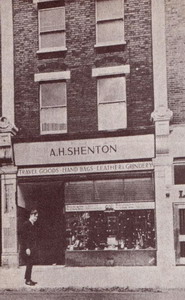
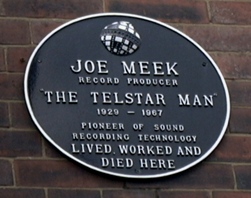
RWEL poems turned sound
(see project site here)
The quality of digital representation is somewhat arbitrary, and always bits.
With three short texts: Yeats’ The Second Coming and Squirrel at Kyle-No-No, and the quote at the beginning of Nabokov’s Pale Fire, I made a new form of poetry: that in the form of sound. I generated binary data using Python, then attempted to use Python’s sound libraries in order to write my own sound files. However, instead, I ended up reading the text files representing the original ASCII in binary, I generated sound files in Processing. I experimented by using different sample rates to read in the data and play the sound, in order to start understanding how sample rate from digital data leads to affects the audio outputs. I used both a sin wave and a Audio Out pulse to show two different sound outputs possible. I also used the data to represent color gradients…
Listen to the text:
sample rate: 1, 256, 1024
2 sin waves
Look at the text:
Sample rate at 1024, 512, 256, and 1:

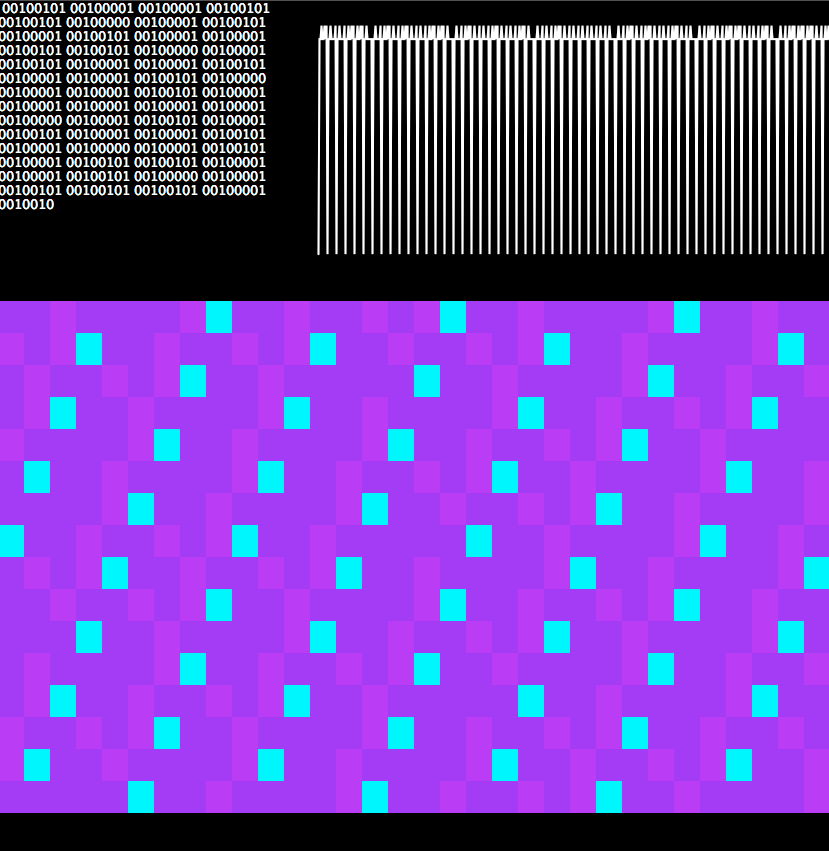


Here is my code in Python:

Here is a snippet example

Using sine waves and black / white, rgb
This reminds me of the ludicrous account he gave Mr. Langston, of the despicable state of a young gentleman of good family. “Sir, when I heard of him last, he was running about town shooting cats.” And then in a sort of kindly reverie, he bethought himself of his own favorite cat, and said, “But Hodge shan’t be shot: no, no, Hodge shall not be shot.
1bit
samplerate 1024
rgb
256 sample rate
NOC from here on out
Further:
I probably will make these points move:
as well as continue what I did for the midterm with libraries and force fields
NOC midterm
Here’s a link to the screen recording
I went through many iterations of this project. This is what I ended up with. I would like to input bloodline datasets as well as using libraries to make biological animations of bodily functions.
see the applet
Here are some images of what I was working on:
kinetic energy HAND POWERED AM receiver
(see project site here)
design by Gabriella Levine, Emily Webster, Genevieve Hoffman
The concept for our Kinetic Energy project evolved from an interest in generating sound by hand. What we ended up creating was an AM frequency receiver that picks up all the frequencies in its bandwidth. It currently doesn’t have tuning capabilities but instead it is sensitive to all frequencies in its immediate vicinity.
In order to make the receiver we worked from the following circuit to create the portable “radio.” Rather than of using a walkman PCB, though, we chose to substitute the LM380N to amplify the signal.
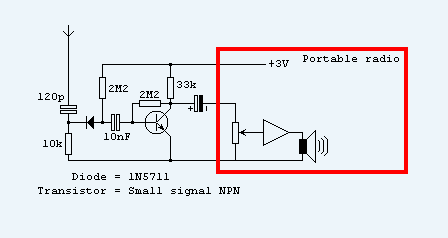
The most complicated part of the process was generating enough energy to power our circuit by hand. We used a geared stepper motor from a printer as our supply voltage. The stepper motor created a decent amount of AC power but we put the stepper in series to increase the supply and then ran it through a bridge rectifier to convert it to DC power. We used a 2200uf 50V capacitor, large resistors and signal diodes which helped store, smooth and regulate our output voltage.
Our gear box was helpful to increase the revolutions on the stepper but we attempted to attach a pull start to make the revolutions more continuous. The mechanics of attaching the pull start to the gear box proved to be difficult since there aren’t any exposed gears that we could easily attach. We tried to create our own gears but the gears weren’t precise enough to line up with the teeth on the gear box.
We then attached a hand crank which made it easier to turn the crank by hand but wasn’t as continuous a motion as the pull start. We still had trouble making a secure connection between the hand crank and the gear we attached to we, though. This made it difficult to generate as much power as we had hoped for despite trying a variety of capacitors in an attempt to store energy before delivering it to the speaker.
Our ultimate goal is to transmit our own signal and tune the receiver. We’d like to do this on both an AM frequency and also explore the possibilities of transmitting a signal to a TV. Pirate radio/TV!
a weird robot – Blatella Mechanica
A design of two minds- Gabriella Levine and Alexander Kozovski– a mechanized creature of linkages.
